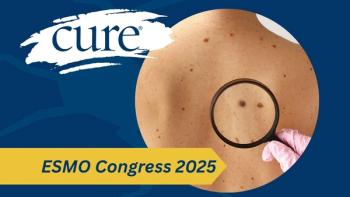
- Summer 2020
- Volume 19
- Issue 3
Investigating a Health Gap in Skin Cancer
Strategies for shortening the time from diagnosis until surgery for Black patients are essential for reducing racial disparities in melanoma outcomes, according to results published in the Journal of the American Academy of Dermatology.
In the study, Black patients with melanoma waited longer to receive surgery than non-Hispanic white patients. Racial differences persisted after categorizing patients by insurance type and melanoma stage.
“We already knew that Black patients with melanoma have a worse prognosis and that longer time to treatment is associated with worse survival, but we didn’t fully under- stand the relationship between race and time to treatment after controlling for various other factors,” first author Raghav Tripathi, a medical student at the Case Western Reserve School of Medicine in Cleveland and a researcher at University Hospitals Cleveland Medical Center, said in a press release. “A more thorough understanding of the factors associated with worse outcomes for Black patients is critical in reducing racial disparities in melanoma outcomes.”
Using the National Cancer Database from 2004 to 2015, researchers retrospectively reviewed 233,982 cases of patients with melanoma, 1,221 (0.52%) of which occurred in Black patients. According to Tripathi, using a large health care database and a sample size of this magnitude allowed researchers to include enough Black patients to investigate racial disparities in skin cancers.
Black patients were found to have longer waits for surgery in stages 1 through 3 melanoma and also a greater amount of time between diagnosis and receiving immunotherapy. They did not wait longer than white patients for chemotherapy, nor did Black patients with stage 4 melanoma wait longer for surgery. After controlling for gender, age, median household income and insurance type, Black patients were found to have more than twice the odds of waiting from 41 to 60 days for surgery, more than triple the odds of waiting 61 to 90 days, and more than five times the odds of waiting over 90 days. On average, the time until surgery for melanoma was 23.4 days for Black patients compared with 11.7 days for non-Hispanic white patients.
Patients with Medicaid had the longest wait (a mean of 60.4 days), whereas those with private insurance had the shortest (44.6 days). Racial differences remained within each insurance type, indicating that insurance status does not fully account for such disparities.
According to the researchers, difference in disease characteristics by race may affect the wait for surgery in patients with melanoma. For instance, Black patients more often have acral lentiginous melanoma, which typically appears on the soles of the feet or under the nails. They also tend to have a greater Breslow depth and stage — measures of the tumor’s invasion — when they receive diagnoses of other melanoma subtypes, which generally predicts a worse prognosis. These cancers require more complex surgeries that take longer to arrange.
“Our data suggest that increased TTDS (time to definitive surgery) in Black patients with melanoma may be an independent explanatory factor for racial differences in melanoma survival, alongside factors such as later stage at presentation, biological differences in melanoma characteristics and differences in health care utilization,” the authors wrote.
Tripathi added that Black Americans often have limited awareness about skin cancer because it is relatively rare in that population.
Nevertheless, the authors highlighted the need to better understand the precise nature of the association between wait for surgery and race, as well as the various components underlying worse outcomes for Black patients with melanoma.
“Ultimately, we hope this study will draw attention to the importance of further understanding the various components of TTDS and worse outcomes for Black patients with melanoma,” Tripathi said. “Additionally, this study suggests that targeted approaches to improve TTDS for Black patients with melanoma are integral in reducing racial disparities in melanoma outcomes.”
Articles in this issue
over 5 years ago
Don't Overlook Biomarker Testing in Lung Cancerover 5 years ago
Telemedicine in Cancer Care: So Far and Yet So Closeover 5 years ago
The Test of Time: Genetic Testing For Hereditary Cancer Riskover 5 years ago
Journaling Through Confinement




